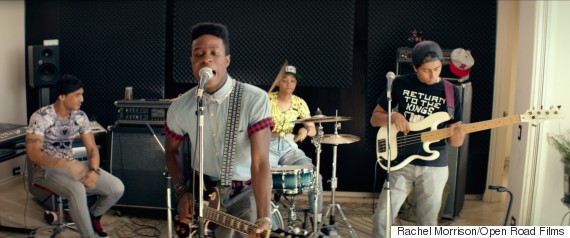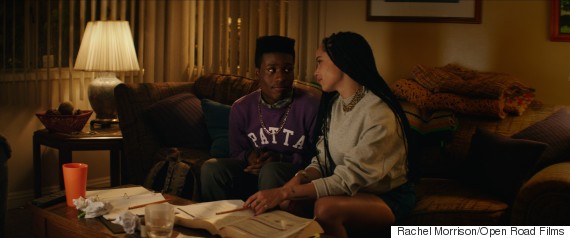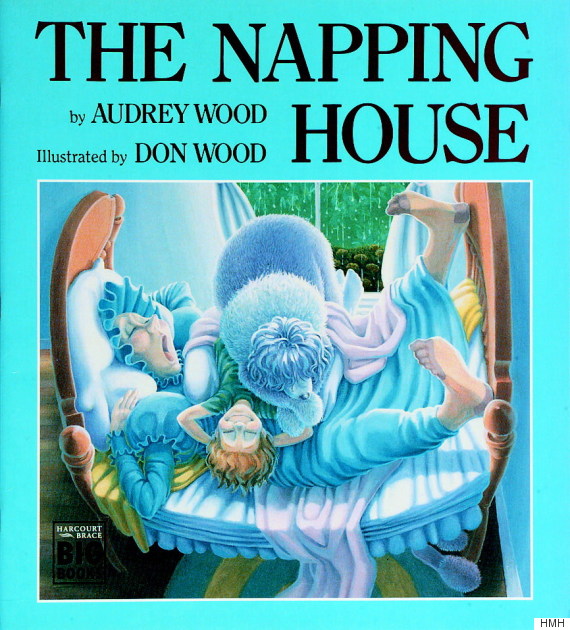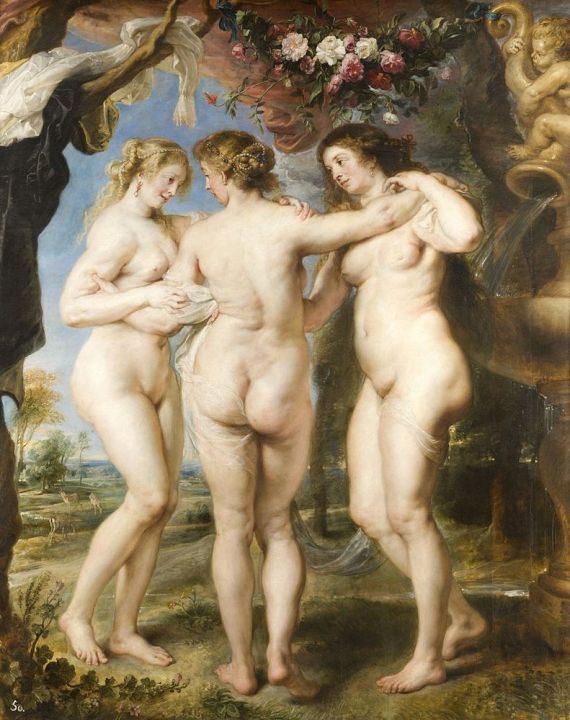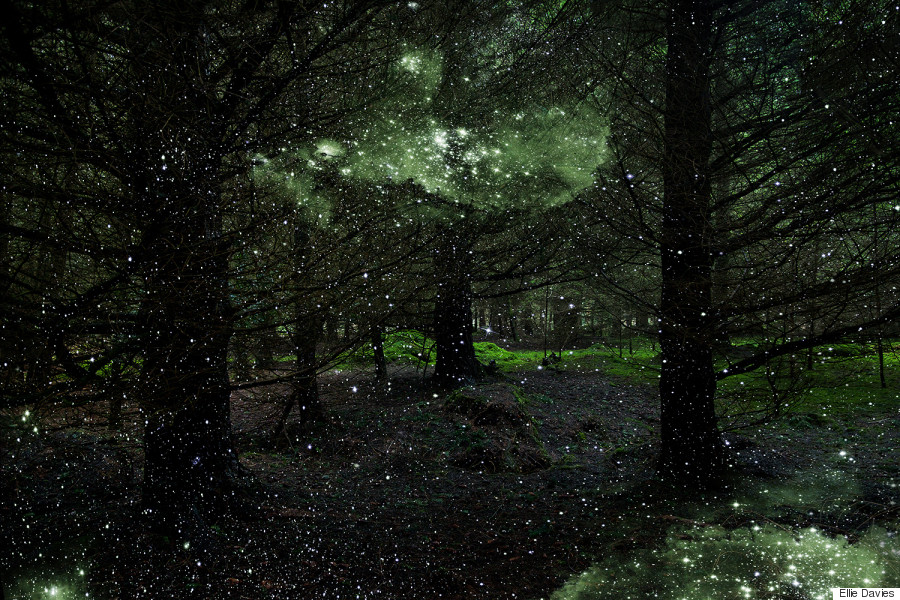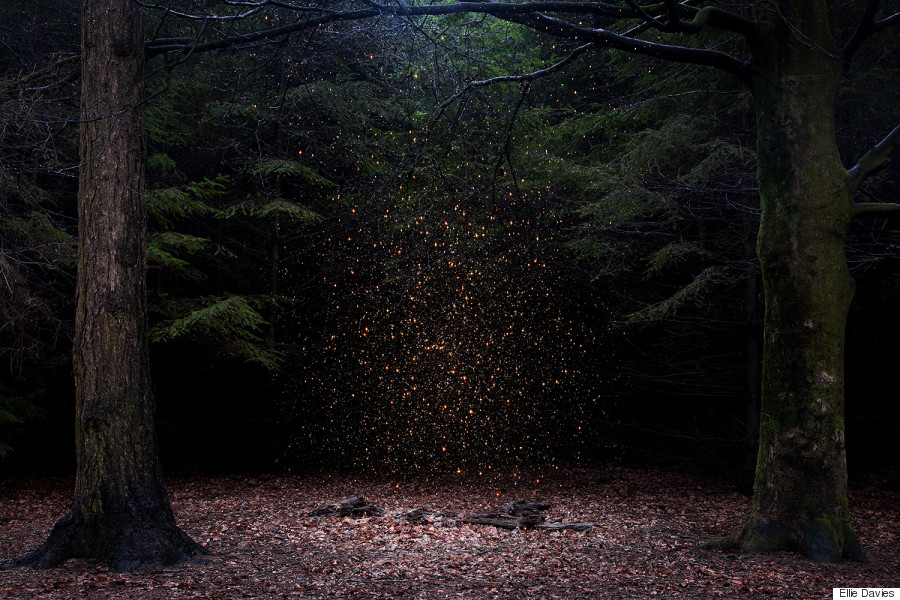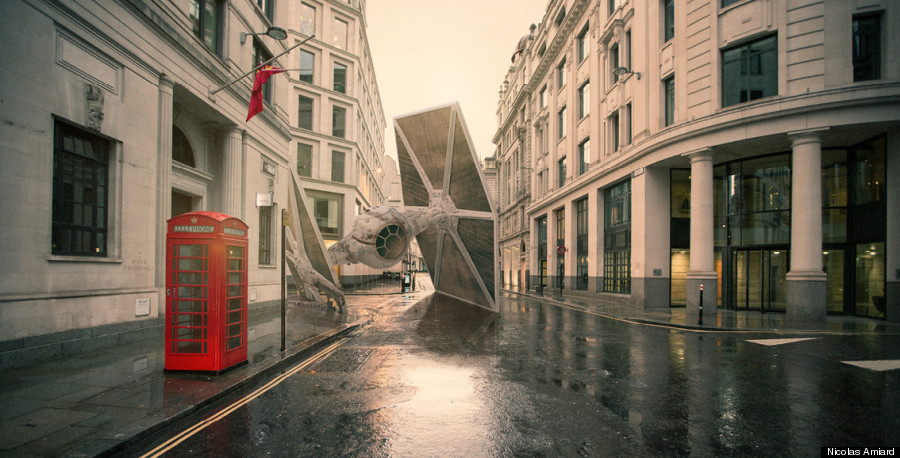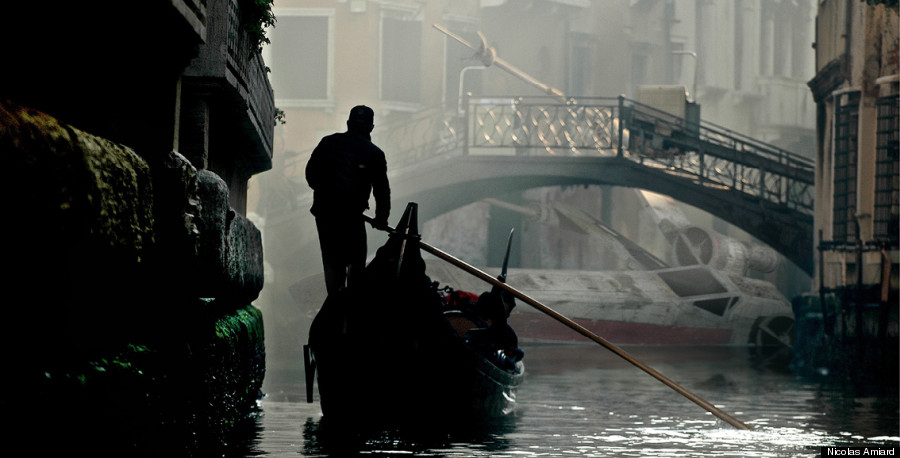Reading to a squirming child can be a bit of a chore, especially the kind of child who demands to hear
Goodnight Moon five times every night for a year and a half. Still, it's one of the most rewarding ways parents can spend time with their little ones: fostering a love of books, cuddling, and creating lifelong memories. For parents who spend their days at work, the bedtime story can be a particularly cherished tradition.
With Father's Day on the horizon, we wanted to remember the times our dads took the time to read a favorite book to us when we were small. Some of our dads read us Seuss, and some read us sci-fi, but one thing is for sure -- we all remember the books our fathers read with us, and the joy those story times brought to our childhoods.
Below, in no particular order, HuffPosters recall the books their dads shared with them growing up. Tell us about your favorite childhood memory of reading with your dad in the comments!
1. The Hobbit
![hobbit]()
No offense to Andy Serkis, but you haven't heard the true voice of Gollum unless you were there when my dad read
The Hobbit and the entire
Lord of the Rings trilogy aloud to my brothers and me when we were little. He's an English professor, not a voice actor, but he got into the performance aspect with gusto, and even 20 years later, I can hear his Gollum impression in my mind's ear. Unfortunately when he tried
Watership Down, the bedtime reading tradition fell apart -- we couldn't get on board with warring bunnies -- but I'll always love that he looked at us three kids, all well under the age of 10, and thought, "Yep, it's time to tell them a story about a faceless evil power bringing an end to life as we'd like to know it." Thanks, Dad.
-Claire Fallon, Culture Writer
2. Mike Mulligan and His Steam Shovel
![mike mulligan]()
Before he retired, my dad was an electrician in New York City, a job that is full of tough guys doing physical labor. I wonder if him reading
Mike Mulligan and His Steam Shovel to me and my siblings sticks out in my mind now because it gave a humanlike face and feelings to heavy-duty machinery, much like the kind I imagined my father working with all day. It brought my dad and his looming 6-foot-6-inch stature down to our level figuratively and literally, because I think we'd usually pile around him on one of our beds or the living room couch when a reading was happening. Today, I wonder if turning the beloved steam shovel into a furnace (spoilers!!!) really was the best plot resolution, but it still stands. Or that's just my childhood nostalgia speaking.
-Jillian Capewell, Entertainment News Editor
3. The Lorax
![lorax]()
My dad used to read
The Lorax to me all the time when I was little. I'm not entirely sure why we got so into it -- it must've just been Dr. Seuss's entrancing meter and repetition that kept bringing us back to it. To this day we'll still sometimes say to each other "Those trees! Those trees! Those truffula trees!"
-Alexandra Svokos, College & Education Fellow
4. Father and Daughter Tales
![father daughter tales]()
My dad and I used to always read
Father and Daughter Tales before I went to bed. When he was tired, he would sometimes skip parts of the story, but I had the entire book memorized, so I always caught him. When he would finish reading, he would always ask me, "So, what's the moral of the story?" And sometimes, when we couldn't track down
Father and Daughter Tales he would read me
Mother and Daughter Tales!
-Michelle Persad, Fashion Editor
5. Hop On Pop
![pop]()
When I was really little (2 to 4 years old) and learning to read, my dad and I would read
Hop On Pop by Dr. Seuss. Well, he would read it me and use his finger to point to the words. I technically couldn't actually read what was on the pages, but I memorized the book. Then, being inspired by the message of the book, I would subsequently attempt to hop on pop.
-Eva Hill, Video Editor and Lead Animator
6. Miss Nelson Is Missing!
![nelson]()
One of my fondest memories with my dad is when he used to read books to my sister, brother, and I. Some of the books that were a part of that childhood memory are
Abiyoyo by Pete Seeger and
Owl Moon by Jane Yolen, which both hold special places in my heart. But our ultimate favorite that Dad would read was
Miss Nelson Is Missing! by Harry Allard. Why? Because as my dad puts it, "You guys were really surprised that the mean substitute teacher was Miss Nelson!"
-Jacqueline Howard, Associate Editor, HuffPost Science
7. Officer Buckle and Gloria
![gloria]()
When I was little, my dad would read to me every night before bed. One of my favorite books we read together was
Officer Buckle and Gloria by Peggy Rathmann. It's the story of a police officer who tours the town of Napville teaching kids about safety. (The name "Napville" never struck me as odd before now ... possibly because nap time was always a mandatory Williams family activity). Officer Buckle's presentation receives a little spice with the addition of Gloria, a police dog with a penchant for dramatics. As Officer Buckle lists off his safety tips, Gloria acts out each potential catastrophe behind him, delighting their young audience. The story is funny, heartwarming, and features an acting dog, so basically I was in little-kid heaven. Even so, I'd often ask my dad to "read it funny," at which point he'd go off-script and make up a nonsensical story, complete with voices and silly faces. I would laugh hysterically. And even after all this time, I still live by Officer Buckle's Safety Tip #77: Never stand on a swivel chair.
-Abigail Williams, Associate Social Media Editor
8. Frog and Toad Are Friends
![frog]()
My dad would read Arnold Lobel's
Frog and Toad Are Friends to me and my sister -- in particular the story "A Lost Button," in which Toad loses a button off his jacket, and then he and Frog search for it. They find a bunch of buttons, but none of them are Toad's. When my dad read us the story, he would read Toad's dialogue with a mounting, apoplectic rage that I'm pretty sure Lobel didn't include in the original version. "That is not my button," my dad would snarl in Toad's voice. "That button is SQUARE. My button is ROUND." Obviously, hearing Toad grow closer and closer to snapping completely and murdering his best friend was, to me and my sister, the funniest thing in the world.
-Alexander Eichler, News Editor
9. Tom Brown's School Days
![tom]()
My dad read a book out loud to me and my brother that no one has ever mentioned since to me:
Tom Brown's School Days. Never heard of it? That's because your parent did not grow up in freshly independent India, in the shadow of the British Raj. Frankly, I don't remember much about the actual story beyond a blur of boys and green fields. (A quick Wikipedia skim tells me the semi-autobiography was set in a country school in England -- Rugby School -- where in the early 1800s the book's author, Thomas Hughes, got schooled). What I do remember is the Pavlovian thrill the sight of that worn and stark blue cover -- no illustrations -- stirred in me each night my dad brought it down from the shelf. This was the end of the day, the only time where I actually knew precisely where we all were for a stretch of time. It could have been any book.
-Mallika Rao, Culture Reporter
10. The Napping House
![napping house]()
My dad Kevin didn't just read stories --
The Napping House by Audrey Wood was always in the rotation -- he was also amazing at making them up. "The Four Bears and The Red Bud Berries" was a favorite for my three siblings and me. Now he reads to and makes up stories for my kids, Eli and Henry, and man oh man, it melts my heart.
-Katie Nelson, National Editor
11. Day of Infamy
![infamy]()
I know what you're thinking: A 1957 non-fiction book about the attack on Pearl Harbor isn't exactly sentimental. Bear with me. My father, a surgeon, worked very long hours. But he always made time for me -- on weekends, at nights before I went to sleep -- and he liked nothing more than sharing his vast knowledge about history. He got that knowledge from books, most of which he kept in the library that was across the hallway from my bedroom.
It's still there, with deep brown wood bookcases that go from floor to ceiling, only now he's had to pile the books two deep in some places. He'd also taken over the shelves in another part of the house, much to my poor mother's occasional dismay. But I get it. The library was the room that always made me happiest. I'd sit there for hours, plucking titles off the shelves and flipping through them in my father's beat-up recliner chair.
Day of Infamy was one of the first "adult" books I could read as a kid. I must have gone through it a dozen times, which seems weird until you put yourself in the mind of an 11- or 12-year-old. Reading it made me feel grown-up. It made me feel like Dad. And that made me feel good. By the way, I've tried hard to carry on that tradition with my own two boys, both of whom hang out in my library and, before bed, demand that I give them history lessons. I'm not sure how much they like the history and how much they just like hanging out with me. But I don't really care and I imagine my father has always felt the same way.
-Jonathan Cohn, Senior National Correspondent
12. Make Way For Ducklings
![duck]()
I have fond memories of reading a number of "vintage" books with my dad when I was little. One of our favorites was
Make Way For Ducklings by Robert McCloskey. It's a book that's been around for a while, but the black-and-white drawings are still packed with action. I remember appreciating how the policemen went out of their way to assist the ducks and keep them safe during their journey to the pond. And when I visited Boston many years later, I was excited to see the statues of the Mallard family in Boston Common. Seeing them brought back memories of the many evenings my dad and I spent sharing the ducklings’ story together.
-Sara Bondioli, Deputy Politics Editor
13. The Call of the Wild
![wild]()
In middle school we had to read
The Call of the Wild, which literally bored me to tears. To encourage me, my dad promised to read every chapter with me -- he even took notes. At the end of the chapters we'd sit down and discuss what had happened and what we thought would happen next. Though it's far from being one of my favorite books, I sort of like it, because without reading it, I would have never had that bonding experience with my dad.
-Yagana Shah, Huff/Post50 Associate Editor
14. Into the Land of the Unicorns
![unicorns]()
My dad demonstrated incredible patience in repeatedly reading first-grade me a novel called
Into the Land of the Unicorns. It involved a young girl who got magically transported into a bizarre unicorn-inhabited land to deliver a secret message to the queen unicorn. Needless to say, this was probably not riveting reading material for a man in his 40s, but my dad persevered with enthusiasm and a (semi-limited) range of voices for different characters.
-Hilary Hanson, Crime and Weird News Editor
15. Curious George Goes to an Ice Cream Shop
![curious george]()
When I was little, I loved reading
Curious George with my dad. The most memorable book from the series is
Curious George Goes to an Ice Cream Shop. It indulged my love of ice cream while instilling the importance of patronizing local businesses, even if the owners are a little crabby.
-Katelyn Bogucki, Multimedia Producer
16. Ender's Game
![ender]()
I never was
that into science fiction (not much has changed), but somehow, when I was in elementary school, my dad coaxed me into reading
Ender's Game, one of the many Orson Scott Card books he read. I loved it, and have probably read it a dozen times since. Looking back, it’s no surprise a story about a student chosen for a special adventure to save the world appealed to a daydreamy, bookish kid -- it’s actually just like
Harry Potter, if Harry Potter had futuristic technology of the ‘80s instead of magic and a space station instead of a wizard school. At the time, I loved having something to bond over with my dad, and also read all of the (much more boring) sequels for that reason. Now, I’m grateful that he taught me the rewards of being adventurous in my reading and otherwise, pushed me to take chances on the unfamiliar and took the time to share something he genuinely loved with his daughter.
-Kate Abbey-Lambertz, Detroit Editor
17. The Golden Compass
![compass]()
I grew up in a family that loved science fiction and fantasy, so one of the first books that I remember bonding with my dad about with was
The Golden Compass by Philip Pullman. The protagonist Lyra was a fearless, talkative girl who was highly intelligent and loved adventure. That book was the beginning of our love for other fantasy and young adult books -- including
Harry Potter,
Stargirl and
The Lord of the Rings. Because Father's Day and my birthday happen around the same time every year, it's a special time for my dad and I to talk to each other about books and what we're reading -- as well as our love of reading. The written word has evolved from handwritten letters to words on a page to texting -- and I wouldn't trade the evolution of my relationship with my dad and our love of reading for anything.
-Madeline Wahl, Blogs & Community Associate Editor
BONUS: Fermat's Enigma: The Epic Quest to Solve the World's Greatest Mathematical Problem
![fermat]()
When I was about 11, my dad, an engineer with a sick sense of humor, informed me that if I wanted to return to camp that summer, I would have to read and report on
Fermat's Enigma: The Epic Quest to Solve the World's Greatest Mathematical Problem, the scintillating, true tale of a mathematician doing ... math stuff. I have no idea if my dad was actually trying to get me interested in something he enjoyed, or was just playing a cruel parenting joke. While I complained and put it off 'til the last minute, I did read the entire thing, and I think I understood it. I maybe even secretly enjoyed the historical drama parts, but now I can remember the taunting image of Fermat’s face on the cover of Simon Singh’s book better than I could explain what an + bn = cn means. Still, this story is one of my favorites about me and my dad, one of the most revealing about our relationship and bound to crack us up if we retell it.
-Kate Abbey-Lambertz, Detroit Editor -- This feed and its contents are the property of The Huffington Post, and use is subject to our terms. It may be used for personal consumption, but may not be distributed on a website.
